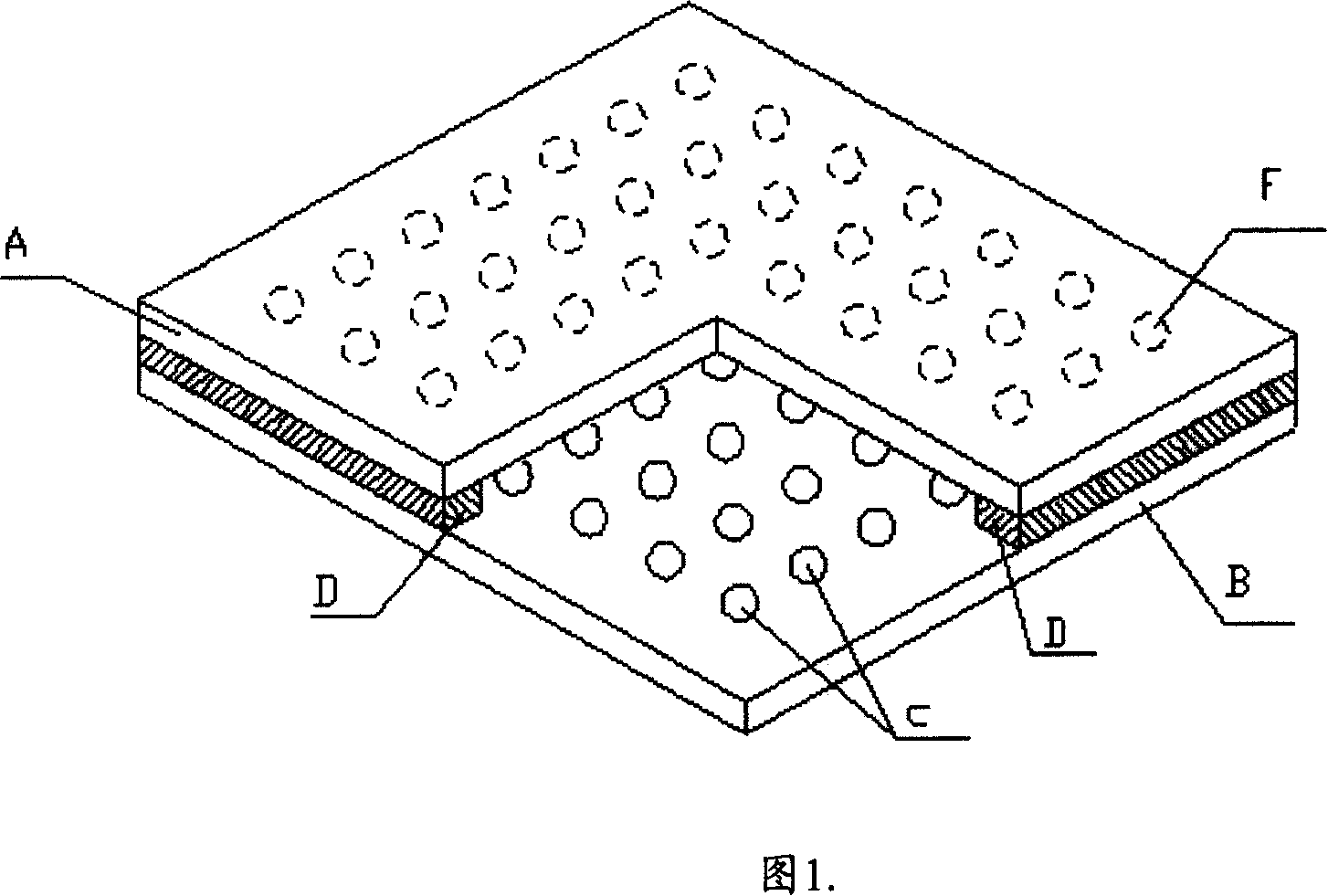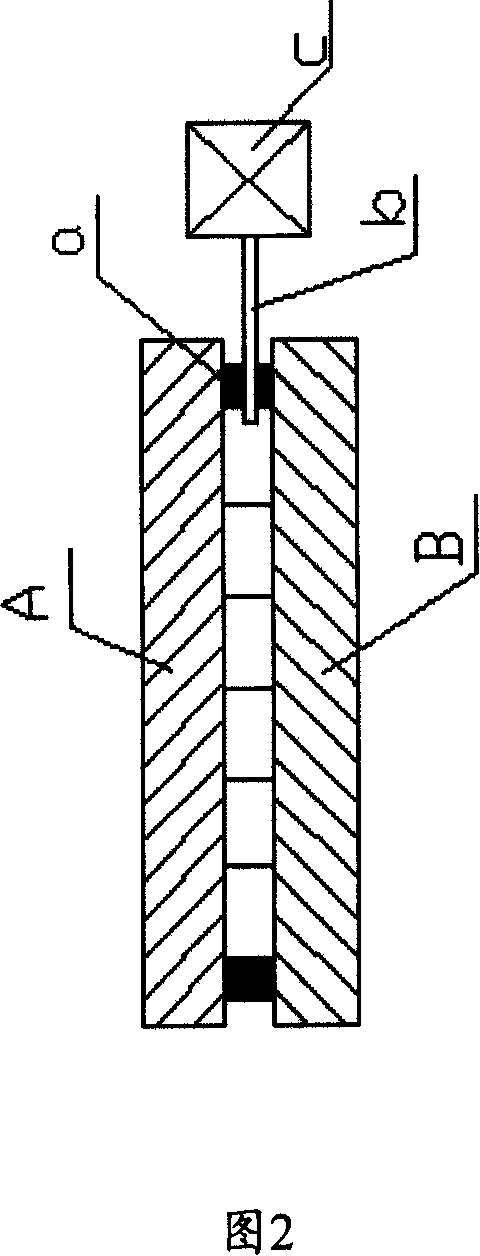New method and equipment for preparing vacuum glass faceplate
A technology of vacuum glass and a new method, which is applied in glass forming, glass reshaping, glass manufacturing equipment, etc., to achieve the effect of beautiful exhaust port, shortened time and high vacuum degree
- Summary
- Abstract
- Description
- Claims
- Application Information
AI Technical Summary
Problems solved by technology
Method used
Image
Examples
Embodiment 1
[0053] (1) Cut, edge and clean the original glass plate according to the required size. The original glass plate can be ordinary float glass, tempered glass, various coated glass, self-cleaning glass, low-emissivity glass, high visible light transmittance glass and so on.
[0054] (2) Use a mechanical drill or a laser drilling machine to make a vent hole with a diameter of 2mm on a glass plate. This piece of glass is called the front substrate glass. Correspondingly, the other piece of glass is called the rear substrate glass.
[0055] (3) Make isolation support points on the rear substrate glass by screen printing. Use amorphous low-melting glass powder (hereinafter referred to as low-melting glass powder A) with a coefficient of thermal expansion slightly smaller than that of the glass panel and an organic solution to prepare a rheological slurry suitable for screen printing. Then use the screen printing method to print wet film dots with a diameter of about 0.5mm and a thi...
Embodiment 2
[0063] (1) Cut, edge and clean the original glass plate according to the required size. The original glass plate can be ordinary float glass, tempered glass, various coated glass, self-cleaning glass, low-emissivity glass, high visible light transmittance glass and so on.
[0064] (2) Use a mechanical drill or a laser drilling machine to make a vent hole with a diameter of 1mm on a glass plate. This piece of glass is called the front substrate glass. Correspondingly, the other piece of glass is called the rear substrate glass.
[0065] (3) Make isolation support points on the rear substrate glass by screen printing. A slurry with rheological properties suitable for screen printing is prepared by using amorphous low-melting glass powder (hereinafter referred to as low-melting glass powder A) with a thermal expansion coefficient slightly smaller than that of the glass panel and an organic solution. Then use the screen printing method to print wet film dots with a diameter of ab...
Embodiment 3
[0073] (1) Cut, edge and clean the original glass plate according to the required size. The original glass plate can be ordinary float glass, tempered glass, various coated glass, self-cleaning glass, low-emissivity glass, high visible light transmittance glass and so on.
[0074] (2) Use a mechanical drill or a laser drilling machine to make an exhaust hole with a diameter of 3mm on a glass plate. This piece of glass is called the front substrate glass. Correspondingly, the other piece of glass is called the rear substrate glass.
[0075] (3) Make isolation support points on the rear substrate glass by screen printing. A slurry with rheological properties suitable for screen printing is prepared by using amorphous low-melting glass powder (hereinafter referred to as low-melting glass powder A) with a thermal expansion coefficient slightly smaller than that of the glass panel and an organic solution. Then use the screen printing method to print wet film dots with a diameter o...
PUM
| Property | Measurement | Unit |
|---|---|---|
| Thickness | aaaaa | aaaaa |
| Diameter | aaaaa | aaaaa |
| Width | aaaaa | aaaaa |
Abstract
Description
Claims
Application Information
 Login to View More
Login to View More - R&D
- Intellectual Property
- Life Sciences
- Materials
- Tech Scout
- Unparalleled Data Quality
- Higher Quality Content
- 60% Fewer Hallucinations
Browse by: Latest US Patents, China's latest patents, Technical Efficacy Thesaurus, Application Domain, Technology Topic, Popular Technical Reports.
© 2025 PatSnap. All rights reserved.Legal|Privacy policy|Modern Slavery Act Transparency Statement|Sitemap|About US| Contact US: help@patsnap.com



